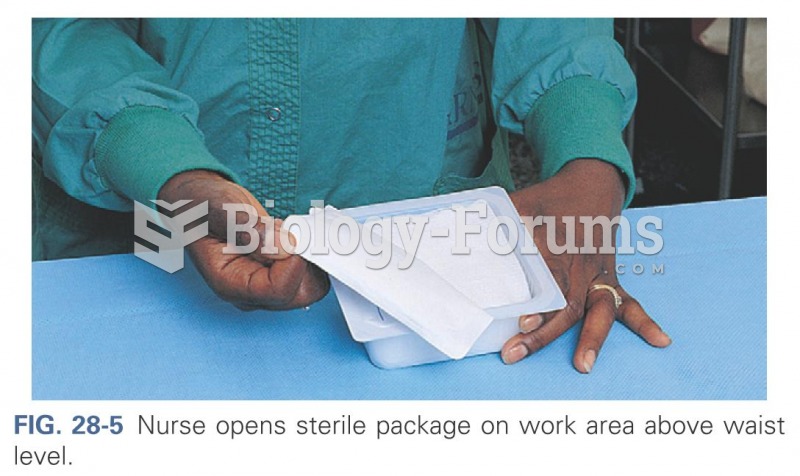Answer to Question 1
D
After the soles of the feet are stroked, if Babinski's reflex is present, the great toe will dorsiflex, accompanied by fanning of the other toes. This indicates CNS dysfunction. Dorsiflexion of the great toe and fanning of the others are normal findings in a child younger than age 2 . Romberg's test: Have the patient stand with feet together, arms at sides, once with eyes open and once with eyes closed (for 20 to 30 seconds each time). Protect the patient's safety by standing at their side; observe for swaying. Plantar response (Babinski's reflex): Using the handle end of the reflex hammer, stroke the lateral aspect of the sole, from the heel to the ball of the foot. The toes should flex inward and downward. Knee reflex: Palpate the patellar tendon just below the patella . Tap the pointed end of the reflex hammer briskly on the tendon. Knee reflex is the most common DTR assessment performed. The normal response is knee extension.
Answer to Question 2
A
The reservoir is the site or source of microorganism growth. Control: sources of body fluids and drainage. Perform hand hygiene. Bathe the client with soap and water. Change soiled dressings. Dispose of soiled tissues, dressings, or linen in moisture-resistant bags. Place syringes, uncapped hypodermic needles, and intravenous needles in designated puncture-proof containers. Keep table surfaces clean and dry. Do not leave bottled solutions open for prolonged periods. Keep solutions tightly capped. Keep surgical wound drainage tubes and collection bags patent. Empty and dispose of drainage suction bottles according to agency policy. The portal of entry is the site through which a microorganism enters a host. Urinary: Keep all drainage systems closed and intact, maintaining downward flow. The portal of exit is the means by which microorganisms leave a site. Respiratory: Avoid talking, sneezing, or coughing directly over a wound or sterile dressing field. Cover nose and mouth when sneezing or coughing. Wear mask if suffering respiratory tract infection. Transmission is the means of spread. Reduce microorganism spread. Perform hand hygiene. Use personal set of care items for each client. Avoid shaking bed linen or clothes; dust with damp cloth. Avoid contact of soiled item with uniform.






